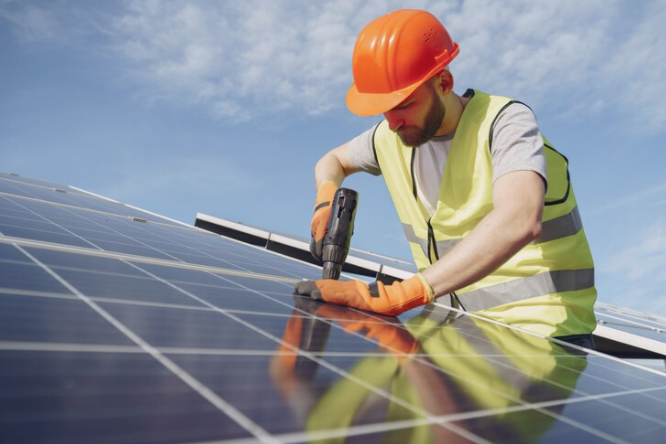As the world navigates economic shifts and policy changes, one sector is radiating a beacon of hope: solar energy. Despite the specter of rising interest rates, the United States is poised to witness a staggering 52% increase in the gigawatts of solar energy added in 2023. This monumental surge not only defies conventional economic wisdom but also underscores the robust momentum and transformative power of solar energy within the country.
According to Matt Jaglowitz, CEO of Exactus Energy, several key factors converge to propel this unprecedented growth. Matt reports “The fact is that costs are still dropping and more incentives and policies are backing the development of solar installations. It’s reshaping the energy landscape and solidifying the ascendancy of solar power.”
Jaglowitz heads a team of approximately 200 solar energy systems engineers and has experienced almost 500% growth in new installations in 2023. “We’ve definitely been happy with the way things are moving. The future looks bright for solar!”
Exactus Energy is one of many solar engineering companies to set new records for solar projects. The team completed over 70,000 jobs since 2022 and is steadily gaining pace. Let’s take a look at the factors that have contributed to the growth of the solar industry in 2023:
Falling Costs Driving Expansion
One of the primary drivers behind the meteoric rise of solar energy installations in the U.S. is the continuous decline in the cost of solar technology. Over the past decade, advancements in solar panel efficiency and manufacturing techniques have significantly reduced costs, making solar energy more economically viable than ever before. This cost reduction has played a pivotal role in attracting investments and fostering widespread adoption across residential, commercial, and utility-scale projects.
Supportive U.S. Policies and Incentives
The commitment of the U.S. government to embrace renewable energy sources has been a catalyst for the surge in solar installations. Federal and state policies, along with incentives, tax credits, and rebates, have provided crucial financial support and stability for solar projects. Initiatives like the Investment Tax Credit (ITC) and Renewable Portfolio Standards (RPS) have incentivized both consumers and businesses to invest in solar energy, spurring growth and development in the sector.
Technological Advancements and Innovation
Technological advancements in energy storage solutions, smart grid integration, and more efficient solar panels have contributed to making solar energy a more dependable and accessible source of power. These innovations have addressed concerns about intermittency and grid integration, further bolstering confidence in solar energy as a reliable alternative to traditional fossil fuel-based electricity generation.
Economic Viability Despite Rising Interest Rates
While rising interest rates typically impede borrowing and investment, the solar energy sector remains resilient. The strong economic case for solar installations, coupled with the falling costs and supportive policies, has mitigated the adverse effects of increasing interest rates. Investors and developers continue to perceive solar energy projects as financially attractive, buoyed by the long-term benefits and returns they offer despite short-term borrowing costs.
Impact and Future Outlook
The surge in solar installations not only signifies a monumental shift towards cleaner and more sustainable energy sources but also presents significant economic opportunities. Job creation, reduced carbon emissions, energy independence, and enhanced grid resilience are among the multifaceted benefits associated with the proliferation of solar energy.
Looking ahead, the trajectory of solar energy in the U.S. appears promising. Forecasts suggest continued growth, driven by technological innovation, favorable policies, and increasing public and private sector commitments to combat climate change. The momentum generated by the solar industry is poised to play a pivotal role in reshaping the energy landscape and steering the nation toward a more sustainable future.
In conclusion, the remarkable surge in solar energy installations in the U.S. amidst rising interest rates is a testament to the resilience, viability, and transformative potential of renewable energy sources. The confluence of falling costs, supportive policies, technological advancements, and the commitment to sustainability underscores a paradigm shift towards a brighter, cleaner, and more sustainable energy future.





